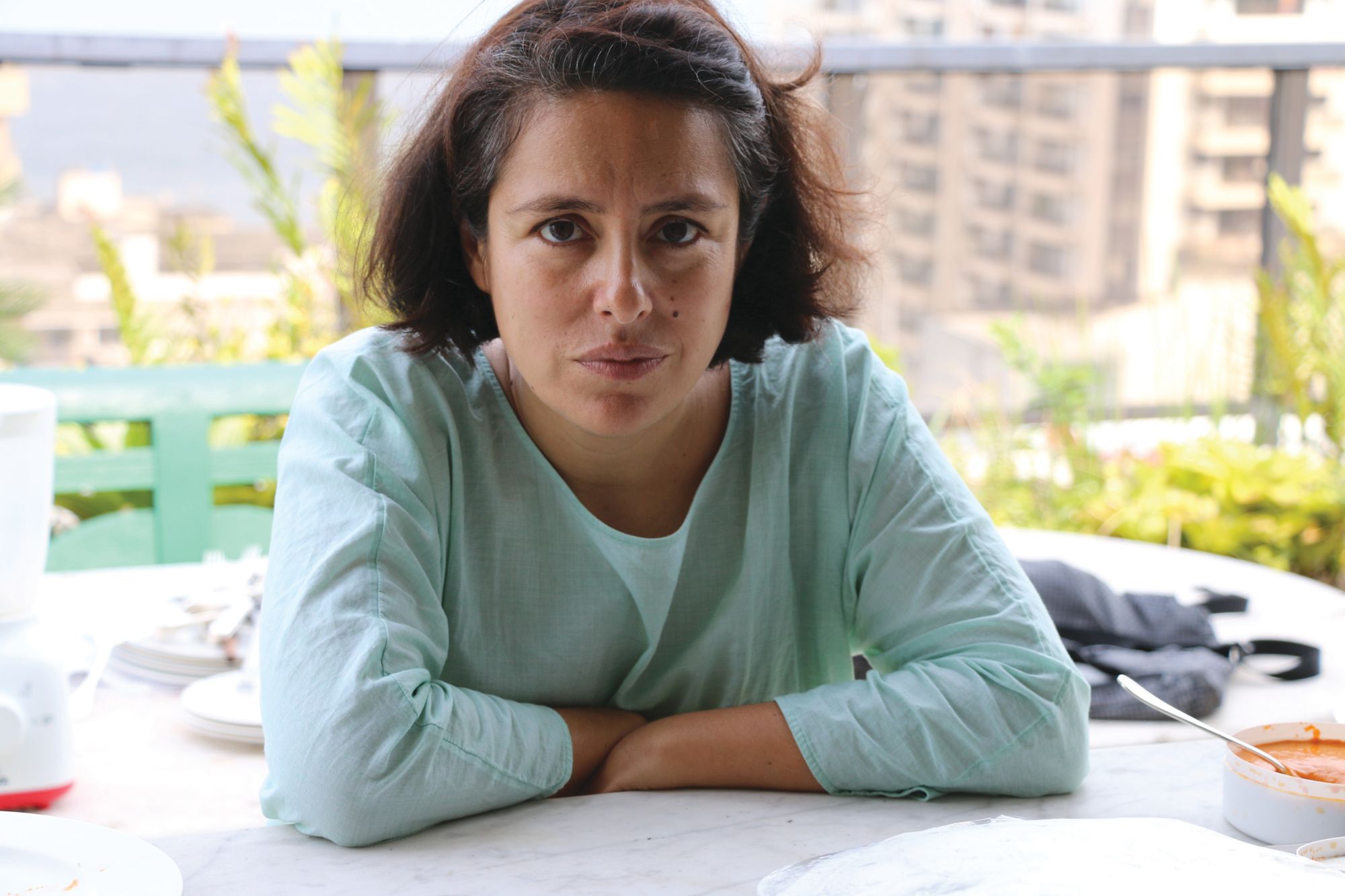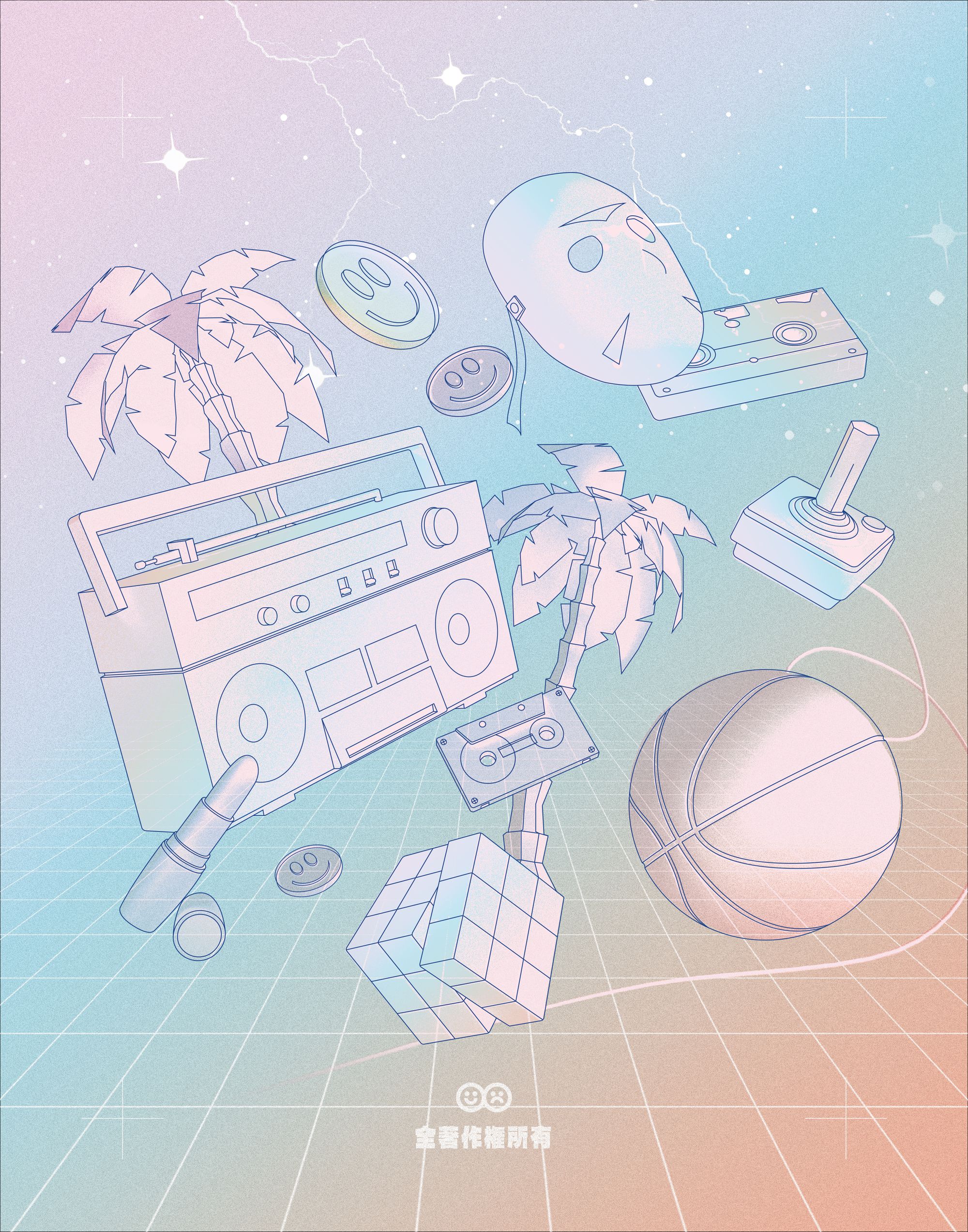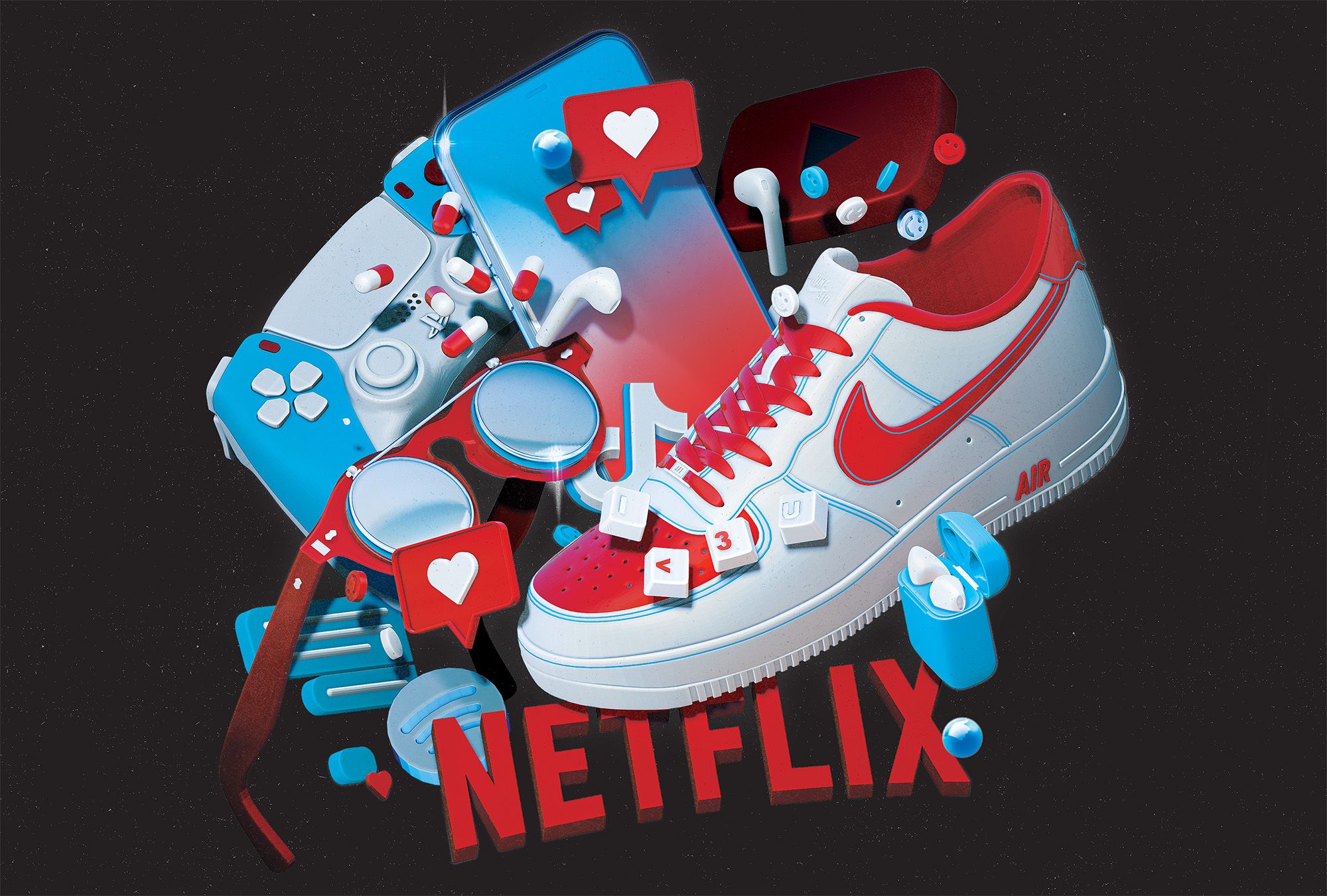“Knowing the type of foods certain demographics consume can help you find the right tone or even typography for a political campaign,” says Sem Devillart cultural analyst and futurist, who has been observing cultural changes for over 20 years. She pays attention to every detail: what we eat, wear, read, watch or listen to. By turning these cultural signals and patterns into high-value intelligence, she has supported many top organisations—including Penguin Random House, Omnicom Group, Christian Dior, and Philips Design—to develop innovative methods, products, or business models. We asked Sem about her work, and what patterns in the present might shape our future.
This article originally appeared in issue no. 5 of the Hype&Hyper print magazine.

What exactly does a cultural analyst and futurist do? What does your typical workday look like?
My work is complex. We observe everything that happens in culture for patterns, which suggest insights, which can then be used as building blocks for different kinds of strategies, for example design, product, business or marketing strategy.
We’re similar to meteorologists, but instead of looking at weather patterns, we look at patterns in this big amorphous thing we call culture, which nowadays is increasingly expressed via digital information. The patterns or insights we find help creatives and strategists steer their “ships” in the right direction. In other words, I read, listen, watch, and talk to people nonstop! In reality, I never stop “working”, because everything I witness can be considered as material. I used to focus on analysing obscure, niche things, but lately, I’ve shifted my attention to the mainstream. What are the most watched shows, top hits, and the most-played video games? What are the political headlines coming from all sides of the political spectrum? Can I spot common themes manifesting in drug culture and bestsellers, fabric patterns, and TV shows all at once? I know I’ve hit the jackpot when I identify common patterns between these different areas. Bingo!
The secret in detecting patterns is in how you archive the information. The right way of storing and labelling information is key to identifying patterns, so this means that I spend a big part of my day with archiving and labelling material. After being immersed in this material, you need to take a step back to identify a pattern.
How did you start your career?
My first revelation occurred when I bumped into Aby Warburg’s work. He was a ground-breaking German art historian who introduced innovative methods to understand and study imagery. Inspired by his work, I tried to apply a psycho-historical approach to the time and place I was living in then—Berlin in the late 90s. This allowed me to understand the hidden correlations between ecstasy consumption, the techno scene, the birth of the internet, and the reunification of East and West Germany. Witnessing on a deep level this important moment in history and its aesthetics made me want to continue doing this kind of work for the rest of my life. So I asked myself, how can I make a living out of observing people dancing in clubs, watching movies, reading political theories, and studying shoe formats?
I found an academic career too restrictive at the time, but I had heard about people who were actually being paid for this type of work in the field of commercial trend forecasting. So I sought out work with Li Edelkoort in Paris, where I learned the craft of applied forecasting in aesthetics. I also worked with Faith Popcorn in New York City on a more psychological consumer-based approach to trend forecasting. I was lucky to be able to learn from these two very accomplished, intuitive leaders how trends operated, and I came away in awe of their instincts, ready to embark on figuring out how pattern recognition and instinct actually work. Since then, I’ve been working with some of the biggest companies in the world to develop methods in trend forecasting that sit at the intersection of man and machine, data analysis, and human observation.
You grew up on three continents, between seven languages. How did this influence your career or help your work?
When you move almost every 3 years to environments where you don’t understand the language and have no clue what the children and teachers are saying around you, you learn to observe closely, even when you feel lost. You learn to decipher codes, and to act and adapt based on what you see and your intuition. For this type of work, being an outsider might be one of the top qualities to have, that is, for instance, not finding anything really funny but always knowing why people are laughing. Learning languages easily is also useful for work in this field, as it helps to gain access to more material and more people with different operating systems. There’s nothing more exciting than topics and people I don’t understand.
What is the scale of your research? Do you work with seemingly “easier” questions for example which colour will be trending, as well as more complex issues, such as trending political views?
If I need to deliver colour trends to a client or identify topics for the book publishing industry, I always extrapolate my insights from a broad array of cultural information. Understanding the political discourse in Brazil might help me identify colours that will sell well to the Brazilian public. Knowing what type of drugs American teenagers are consuming can help me extrapolate concepts for a self-help book category. Or for example, seeing the newest trainers from Nike can inform me on new car designs. The list goes on. Knowing the type of foods certain demographics consume can help you find the right tone or even typography for a political campaign. The big reflects in the small, and vice versa. I find that the best answers are often found in things that are adjacent or even far afield from the spaces you already operate in.
In a lecture, you talked about the era of the 80s: big hair, Hubba Bubba gums, muscles, cocaine, and shoulder pads. You named this pattern as “big”. Why were people tending towards “big” things in the 80s? Who or what pulls the strings in a zeitgeist?
There are many forces at play that determine the flavour of the times we live in. Many are well understood, like media virality, some less so. When we catch a cold, for example, we tend to think it happened through contagion, that somebody else passed on their virus to us. This is the classic influencer take on why things spread. But how can it be that some people who are exposed to a cold catch it, while others don’t? What role does our immunity response play? The pool of information we’re exposed to is messy and chaotic, and it interacts with us and our communities in complex ways, but we’re still in the infancy of understanding how this works. Zeitgeist is nothing else than a way we organise information by identifying a prevailing pattern amongst different things that happened at a particular point in time. It helps us navigate through the endless information and chaos. The fact that we crown “cocaine” as the drugs of the 80s and not marijuana, which was also hugely popular, is because cocaine is so easy to cluster together with other phenomena, such as big shoulder pads: they both suggest a sense of grandeur. One could almost say that building patterns is the best way of navigating information complexity—akin to identifying trends in time.

Could you share a pattern you’ve noticed lately?
Have you noticed how many shows are playing with the idea of the multiverse right now? Everything Everywhere All At Once, Severance, Russian Doll, and Marvel movies like Doctor Strange, Miss Marvel or Spiderman, just to name a few… You might wonder, why? What they all have in common is the theme of different reality bubbles co-existing, the great dangers, opportunities, and pitfalls in this co-existence and these worlds’ interpenetration and permeability. This theme is reflected in the information bubbles dividing different groups in society, as well as by the effort to actively create different digital realities in the vision of the Metaverse. The current discourse on identity also has to be mentioned, where people’s self-identify and worldviews are built around the colour of their skin, or the desire of American youth in colleges to have safe spaces. There is an increased understanding that we live in multiple realities, and that these realities co-exist, one world neatly disassociated from another. In this light, it’s not surprising that ketamine—which works through a kind of dissociation—is a fashionable therapeutic treatment right now. The consequences mean it’s not surprising that many are perceiving the U.S. as losing its edge as a world leader. In so many fields in culture, we’re witnessing the demise of all types of “single world concepts”. It’s no longer “We are the world,” there’s no more singular moral authority, no more white knight in shining armour, no more twentieth-century cosmopolitanism. So all of this has me working with a lot with concepts revolving around dissociation, simultaneity, and genre mixing.
Once you’ve gained such insight, how do you work with it? How can you forecast the future from these patterns?
I don’t like saying I can forecast the future, but what I can definitely say is that by understanding what’s happening right now, and the common patterns between high-energy cultural inputs, we can deduce what output might have a higher probability of succeeding. So if we use the motif of “disassociation” to evaluate potential success, then we’d be looking for, in terms of graphic output, more clearly defined boundaries instead of gradients, accentuation on boundaries, instead of seamlessness, more staccato than legato, in terms of music. You can translate these motifs into any language: architecture, fashion, music, politics, etc.
Designers have a significant role in shaping the future regarding our physical environment as well as ways of thinking. In your opinion, what is—or what should be—their attitude towards the role of design when it comes to dealing with questions of 2022 and the near future?
There has been a whole lot of wonderful design doing and design thinking permeating society, but what about design feeling? I would like to see the externalisation of the deep sensitive and perceptive faculties, which designers exercise naturally and which precede the thinking and the doing. This is something deeper, something more intuitive, a world of forms that precede, underlie and rise to the materiality of the worlds we share.
How do technology and AI affect a cultural analyst’s job? Is there any chance that this type of cultural analysis will be done by machines in the future?
Machines are fantastic at searching and counting, but still quite undeveloped when it comes to discovering the emergent, the interesting, the newly significant. One day, we might be able to design these machines as we get to understand ourselves better.
“Sem Devillart is a cultural analyst and strategist focused on visual and online culture. For over 20 years, she’s been collaborating with top organisations, developing innovative methods to turn cultural signals into high-value intelligence, media content and business models. Currently, she works with Harmony Labs on the Narrative Observatory, a tool to identify, measure and track media narratives and visual trends. She is a founding faculty member of the Masters of Branding Program at the School of Visual Arts in New York City, where she teaches future forecasting and design research.”
Illustrations: László Bárdos
Photo: Brian Waniewski









